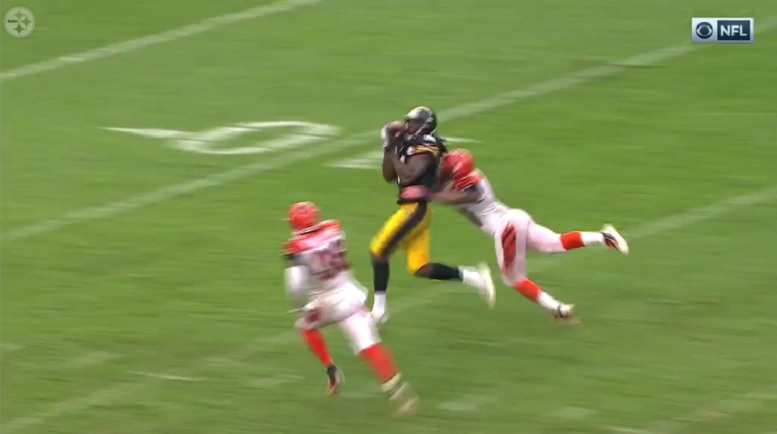Over the course of the first two games of the season, the Pittsburgh Steelers have, predictably, run the majority of their offense out of obvious passing sets, namely the 11 and 01, with three and four wide receivers on the field, respectively. Though it hasn’t been as frequent as one might think.
The Steelers have used these sets on 88 of 144 total offensive plays, which is about over 61 percent, and one might expect that number to be closer to 70 percent. But the team has had some big leads through the first two games, which make it more likely for them to use run-blocking sets with multiple tight ends, and the absence of Markus Wheaton may also play a role.
But the frequent usage of two-receiver sets does provide some insight, one interesting tidbit of which reflecting on how second-year wide receiver Sammie Coates is used in such instances. While Antonio Brown has been on the field for all but two plays, including a kneel down, the player lining alongside him in two-receiver sets has varied.
And it usually hasn’t been Coates. In fact, in the majority of cases, it has been veteran Darrius Heyward-Bey, who has taken over half of his snaps—22 of 39—in such instances. Coates? While he has logged 81 total snaps on offense through two games, he has been used as one of two wide receivers just eight times.
Out of 34 plays in which two wide receivers were on the field, that represents about only 24 percent of the total pool of snaps. The majority of them—22, as mentioned—have been taken by Heyward-Bey, but even Eli Rogers has seen four snaps lining up next two Brown with either two tight ends or two players in the backfield to accompany them.
It may surprise you to learn that only 16 of those snaps, a bit less than half, were running plays, and even three of Coates’ eight such snaps were running plays, so it’s not as though it was necessary to get Heyward-Bey on the field because he represents the best blocker on the Steelers’ roster among the wide receivers.
On Heyward-Bey’s 20 snaps, the Steelers gained an average of 3.4 yards per play, of which 13 were indeed running plays. The longest completed pass was only nine yards. With Coates on the field, the team averaged 3.75 yards per play, and that included a sack that resulted in a 12-yard loss.
The thing to take away from this, however, is that the teams clearly isn’t fully prepared for Coates to take on a larger role, as about 91 percent of his snaps have come with at least three wide receivers on the field.
When Markus Wheaton returns, you can expect that Coates will see very few, if any snaps in two-receiver formations—at least not until he gives the coaching staff a better set of reasons to trust him in those situations where there is greater responsibility on him.








